Cutting roses in summer
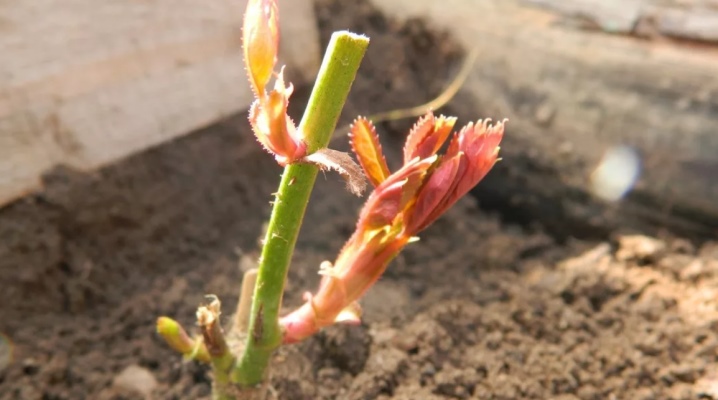
Rose is one of the most common and beautiful flowers. Therefore, many gardeners tend to breed them in their area. One of the easiest ways to do this is by propagating roses by cuttings.
Peculiarities
Cutting roses in summer allows you to grow healthy bushes by the end of the season, which will retain all the main varietal characteristics. Before the onset of cold weather, the plants take root, so they survive the winter without any problems. Flowers of any kind can be propagated in this way.
It should be noted that grafting is worthwhile only if the weather outside is not too hot. It is best to do this on cloudy days when the temperature does not rise above 22-23 degrees.
Seedlings planted in open ground will need to be covered for the winter. This should be done both in cold regions and in warm ones. You can use a thick layer of sawdust, dry foliage, or spruce branches to shelter flowers in your garden. In this case, the roses will be able to survive their first winter.
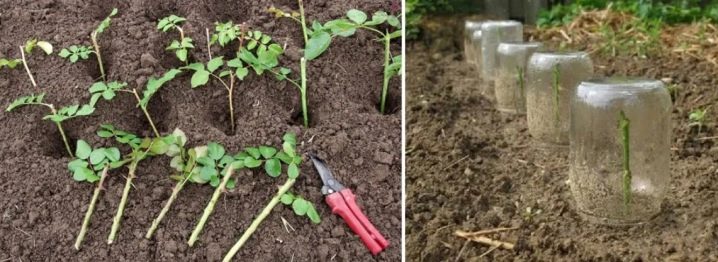
Timing
It is recommended to cut plants in summer in July. But growers prefer to work with early varieties of roses in June, and with late ones - in August. After all, this procedure must be carried out either during flowering or before it begins. At this time, the plants are full of vigor. In addition, a person can already see the varietal characteristics of the specimen selected for breeding.
Some gardeners prefer to cut plants according to the lunar calendar. It is recommended to do this on the waxing moon. It is believed that it is in this case that plants root best. But on a full moon, you should not work with cuttings.
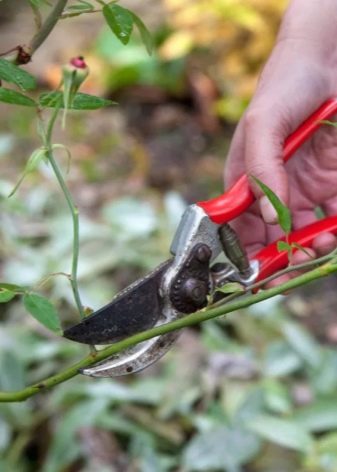
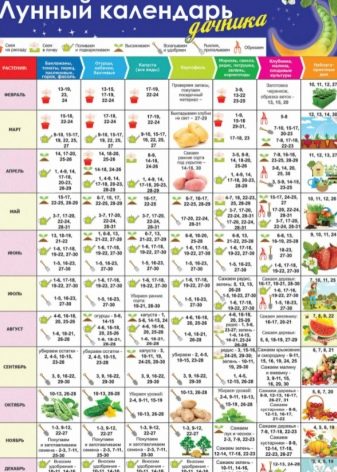
Selection and preparation of material
Young stems with bud buds are best suited for grafting roses. Too old or thin shoots take root in a new place rather poorly. For reproduction of the bush, it is worth separating the part of the shoot, which is located at its very base.
The cut must be done at an acute angle. In the same way, you need to cut off the upper part of the cutting. Its average length should be within 15 centimeters. The prepared stalk must be cleaned of foliage. Thorns from the surface of the stem must also be removed. This is done so that moisture from the plants evaporates more slowly.
Cut off the cuttings with sharply sharpened tools. In this case, the stem can be detached without damaging it. Before use, the tools are treated with a weak solution of potassium permanganate or medical alcohol. This is done in order to minimize the risk of infecting the plant with some kind of disease.

It is best to harvest cuttings in the early morning. At this time, the rose bushes are still filled with moisture. Cuttings should be rooted immediately after cutting. Otherwise, they will dry out and take root much worse.
To speed up the rooting process of cuttings, the cut material must be soaked in a solution of "Kornevin" or similar preparations. Alternatively, you can also use folk remedies. To prepare homemade solutions, 40-50 drops of aloe juice or 2 teaspoons of honey are diluted in 500 ml of pure water.
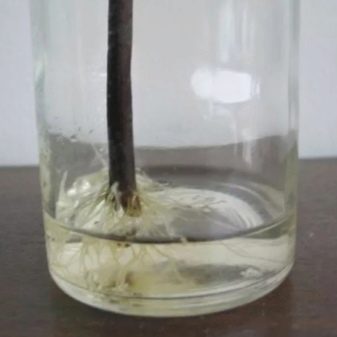

The ways
After preparing the cuttings, you can proceed to the next stage of work. There are several basic methods of rooting cuttings that are used during the summer.
In packages
This simple method of propagating roses takes very little time. First of all, dense bags are filled with moistened moss or nutrient substrate. Cuttings are buried in it. Then the bag is inflated and tied. As such, it is suspended in a sunny place.
A greenhouse effect is created inside the dense bag. Therefore, the roots develop very quickly there. The only drawback of this method of preparing roses for planting is that some of them can rot in the process.
Another breeding method using packets is called the Burito method. Gardeners have recently come up with this method. The step-by-step process of rooting cuttings looks very simple. The cut parts of the plant should be wrapped in paper or damp newspaper. Usually gardeners choose several healthy blanks at once. They are carefully laid with a thin layer of moss. Then the prepared cuttings are placed in a tight bag. It must be sent to a dark and warm place.
From time to time, cuttings prepared in this way are checked and aired. This helps prevent root decay. If you do everything right, the roots will appear at the cut site in two weeks. This will happen even if the grower did not use growth stimulants. After the roots appear in place of the cut, the future flower can be planted under a jar in open ground.
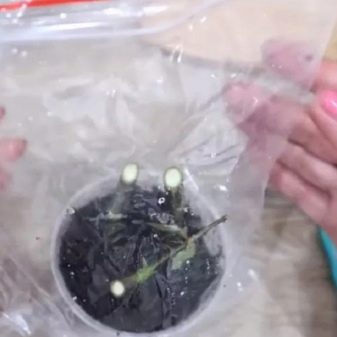
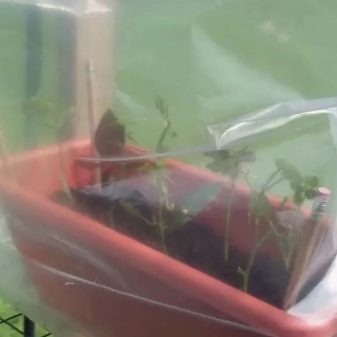
In potatoes
This method of rooting cuttings is considered one of the most effective. The gardener will need medium sized potatoes. The root crop must be completely healthy, without any signs of rot or mold. Potatoes should be soaked in a solution of drugs such as Stroby, Horus or Delan. Next, it needs to be cleaned of eyes and sprouts.
Slices of cuttings are immersed in a container with aloe juice for 12 hours. Any growth stimulants can be used instead. They are used by following the instructions on the package. Next, small holes are cut out in the tubers with a sharp knife. One cutting is placed inside each potato. After that, its upper cut is carefully sealed with paraffin.
The potatoes, along with the cuttings, are placed in a pot with nutritious soil. In this form, the workpieces are left for 14-20 days. Once every few days, cuttings are watered with warm water. It is recommended to add a small amount of sugar to it.
This method of rooting is good because the nutrients and starch contained in the tubers stimulate the growth of young roots. Therefore, after two weeks, the plants are usually ready to be transplanted to a new location.
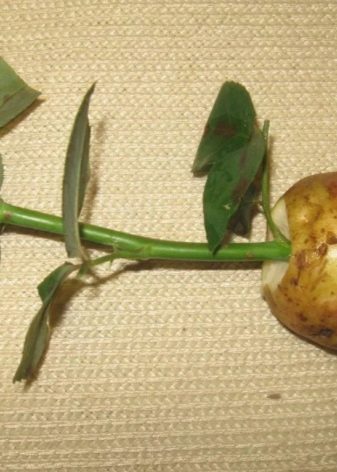
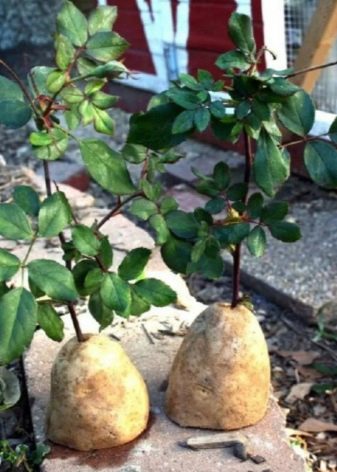
Some gardeners do it differently, and plant potatoes with cuttings directly in the open field. From above, the plants are covered with jars or plastic bottles. In the future, the roses are ventilated from time to time, and watered with a small amount of settled water.
In containers
This breeding method is suitable for people living in regions with cold winters. In addition, it can be used by those who have not yet decided where exactly they want to plant new roses.
To propagate plants using this method, the gardener needs to prepare a small pot. Its diameter should be within 10 centimeters. Drainage holes must be made in the bottom of the selected container. This is necessary to remove excess moisture.
The container is filled with a special soil for roses. After that, a small depression is made in the ground. Sand or vermiculite is poured into it. This is done in order to prevent root rot. But you should not add fertilizers to the soil. Mature plants need feeding, but young roses will suffer from excess nutrients.
Next, the tip of the cutting should be lowered into a container with a growth stimulator. After that, the rose is planted in the ground under a bottle with a cut-off bottom. From time to time, cuttings can be ventilated by simply removing the lid from the container. Drying soil also needs to be watered periodically.
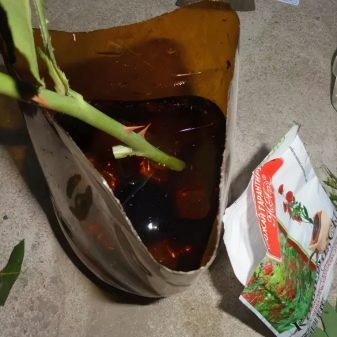

You can understand that the stalk has successfully rooted by noticing small green leaves at its top. After that, the shelter can be removed.In the future, the growing rose is also sprayed with settled water from a spray bottle. They do it daily. As soon as the flower is old enough, it will be possible to plant it in open ground.
In autumn, plants must be covered with spruce branches, and then with a film or roofing material. After that, young roses are sprinkled with earth. It will be possible to open the containers after the snow has melted, when the probability of return frosts has passed. First you need to remove the protective cover. The lapnik can only be removed after a couple of days. This will make it much easier for plants to adapt to new conditions.
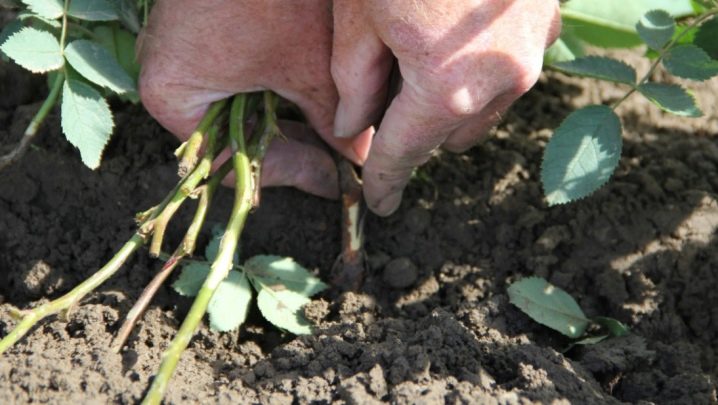
Woody stems
This method of cuttings is not quite summer. But materials for work are procured just at the end of the season. At this time, the plants are pruned to prepare them for winter. It is these cut stems that are used in the future for growing roses.
Lignified stems are placed in a container with sand or wet moss. In this form, the blanks are stored in a refrigerator or cellar until the end of winter. Plants are regularly inspected to see if they have rotted. The spoiled cuttings are thrown away.
In spring, flowers are planted in trenches or pits prepared in advance. After planting the cuttings, they are watered regularly. Plants usually take root by the end of June.
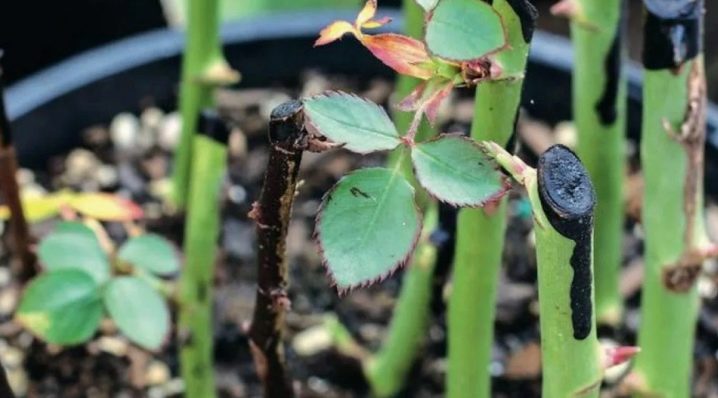
Roses from bouquets
For grafting, it is quite possible to use even roses from bouquets. They do this not only in the summer, but at any other time of the year. Unfortunately, this is far from the best method for propagating roses. After all, only 20-30% of the selected cuttings take root. In addition, only fresh roses are suitable for propagation. It is desirable that the flowers are local. Only in this case they will be able to adapt in the selected area and not die after the first frost.
The stems of the selected plants must be cut into pieces. The size of each of them should be within 15-18 centimeters. Prepared cuttings are placed in a container with filtered or settled water. A small amount of the ash solution can be diluted in it.
In such a container, the flowers should stand until small roots appear. Water at this time must be changed every day. After the roots appear, cuttings can be planted in a pot with a nutritious substrate or in open ground. They take care of such plants in the same way as for any others.


The nuances of cuttings, taking into account the variety
When planning the cuttings of roses, it is worth considering the peculiarities of rooting of different varieties of these noble flowers.
-
Hybrid tea roses. Such plants do not root very well. Cuttings are harvested from semi-lignified shoots. The length of the green blanks should be within 7 centimeters. Slices are made oblique. There should be 2 leaves on each cutting. Without them, the cuttings will not take root. You can prepare them for planting in soil or nutrient substrate in any way. In the future, rooted cuttings are looked after in the same way as any other roses.
-
Climbing rose. Only varieties with small buds are suitable for grafting. In addition, ground cover flowers can also be propagated in this way. Such flowers are most conveniently propagated by the Burito method. Cuttings are cut from a large bush. They should be green and longer than normal. Prepared cuttings are rooted in any way. After planting in open ground, they are regularly watered. The soil next to the green stems must be loosened. In a short time, in this way, you can create a full-fledged hedge of climbing roses.
-
Floribunda. This type of rose is quite difficult to propagate. Of all planted cuttings, only half take root. Therefore, when planning their landing, the amount of harvested material must be doubled.
Summer cuttings are a method of propagating roses that suits both beginners and experienced gardeners. If you do everything right, by the end of the warm season, the number of roses on your site can be increased several times.
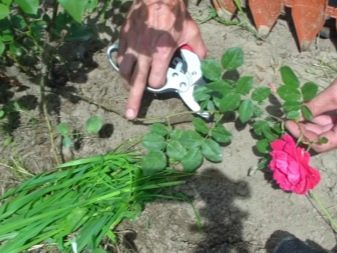
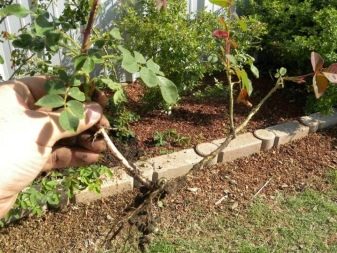

































































































The comment was sent successfully.